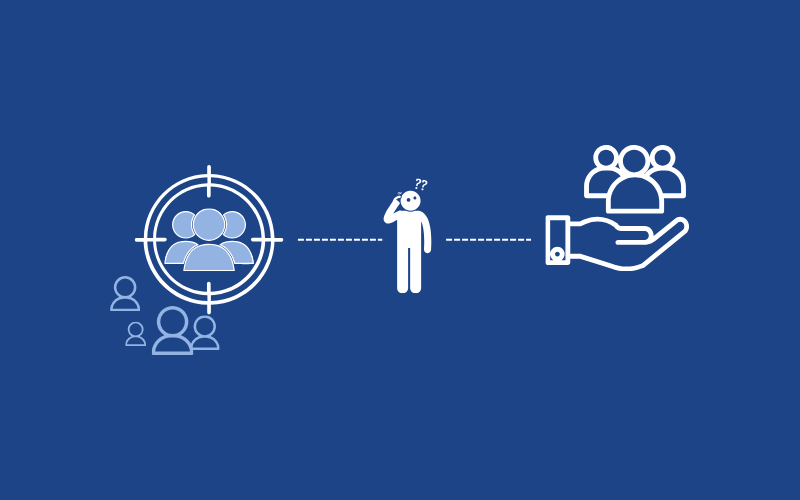Introduction
In the dynamic landscape of business development and customer relationship management, two terms often take center stage and has differences between them: lead vs contact. While both are integral to the growth of any enterprise, understanding their subtle distinctions can significantly impact your business strategies. In this comprehensive guide, we will delve deep into the realms of leads and contacts, unraveling their differences, exploring effective strategies to handle them, and highlighting how these distinctions can propel your business to new heights.
Lead vs Contact: Unveiling the Core Difference
Lead: A Potential Opportunity
A lead refers to a prospective customer who has shown interest in your products, services, or offerings. It’s someone who has taken a step beyond mere curiosity, showcasing intent by providing their contact information or interacting with your brand in a way that indicates potential interest. For instance, a person who fills out a subscription form, downloads an eBook, or requests a product demo can be classified as a lead.
Contact: A Point of Connection
On the other hand, a contact represents an individual or entity whose details you possess but may not necessarily have displayed explicit interest in your offerings. Contacts can encompass a broad spectrum, including existing customers, industry peers, or individuals who have subscribed to your newsletter. Contacts serve as valuable connections within your network, and nurturing these relationships can yield unexpected opportunities.
Lead vs Contact: Leveraging the Distinctions
1. Qualifying Leads for Targeted Engagement
By identifying and segregating leads from contacts, businesses can tailor their marketing efforts more effectively. Leads have demonstrated a level of intent, making them ripe for personalized engagement. Employ strategies like lead scoring, analyzing their interactions, and understanding their pain points to customize your approach and convert them into loyal customers.
2. Nurturing Contacts for Future Prospects
Contacts offer a wide scope for nurturing relationships and expanding your business network. Regular communication through newsletters, webinars, and informative content can keep your brand on their radar. As contacts witness your expertise and value, they may evolve into leads and, subsequently, loyal patrons.
3. Streamlining Communication Channels
Understanding whether you’re dealing with a lead or a contact can help you determine the appropriate communication channel. Leads might warrant more direct forms of communication, such as personalized emails or one-on-one consultations. Contacts, however, may benefit from broader communication methods, like newsletters or social media updates.
4. Data-Driven Decision Making
Categorizing leads and contacts allows for more accurate data analysis. You can identify trends, preferences, and pain points specific to each group. This information empowers you to make informed decisions, optimize your strategies, and allocate resources more efficiently.
Lead vs Contact: Effective Strategies
Segmentation: Tailoring Approach for Maximum Impact
To harness the full potential of leads and contacts, segmentation is key. Divide your leads into categories based on their level of interest, demographics, or behavior. This enables you to craft highly personalized strategies that resonate with each segment. Similarly, segmenting contacts ensures that your interactions remain relevant and valuable.
Lead Nurturing: From Interest to Conversion
Once leads are identified, a strategic nurturing process can guide them along the conversion path. Send targeted content, offer exclusive deals, and address their pain points directly. Gradually build trust and credibility, paving the way for a seamless conversion journey.
Contact Engagement: Building Lasting Connections
Contacts might not be ready to convert immediately, but consistent engagement can change that. Regularly share industry insights, success stories, and valuable content. This positions your brand as a trusted authority, increasing the likelihood of future collaborations.
FAQs
Q: Can a contact become a lead over time?
A: Absolutely! Contacts can evolve into leads based on their interactions and engagement with your brand. Consistent nurturing and valuable communication can transform a contact’s passive interest into active intent.
Q: What is lead scoring, and how does it work?
A: Lead scoring is a methodology that assigns a numerical value to each lead based on factors like their engagement level, demographics, and behavior. This helps prioritize leads and allocate resources accordingly.
Q: How can I manage a large number of leads and contacts effectively?
A: Utilize Customer Relationship Management (CRM) software to organize and track your leads and contacts. CRM systems offer tools for segmentation, communication, and data analysis, streamlining your efforts.
Q: Is it possible to convert a lead that seems unresponsive?
A: Yes, with a well-crafted re-engagement strategy, you can revive seemingly unresponsive leads. Offer fresh value, address their concerns, and remind them of your offerings to reignite their interest.
Q: What’s the role of storytelling in lead and contact management?
A: Storytelling humanizes your brand and resonates with both leads and contacts. Sharing success stories, case studies, and relatable content can establish an emotional connection and boost engagement.
Q: How do I measure the success of my lead and contact management strategies?
A: Key performance indicators (KPIs) such as conversion rate, engagement rate, and lead-to-customer ratio can provide insights into the effectiveness of your strategies. Regularly analyze these metrics to refine your approach.
Conclusion
In the world of business, recognizing the nuances between leads and contacts can elevate your customer relationship management to new heights. By understanding their intent, tailoring your strategies, and nurturing relationships, you’ll unlock a world of opportunities for growth and collaboration. Embrace the power of distinction, and watch as your business thrives through effective lead and contact management.


